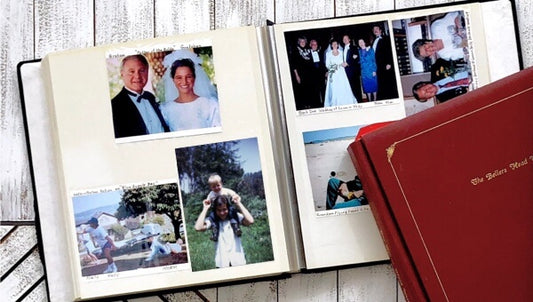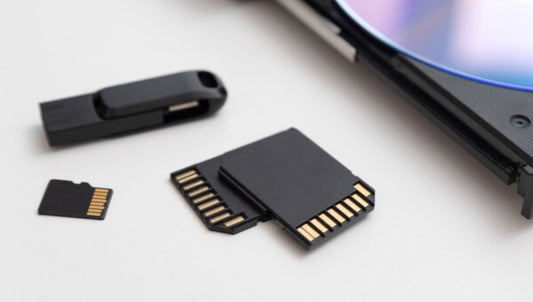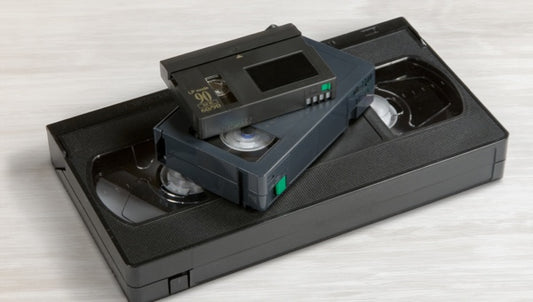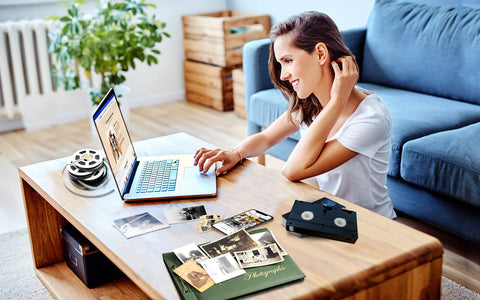Ever tried printing a favorite photo only to end up with someone’s head cut off or the whole thing looking oddly stretched? We’ve all been there. Whether you're framing a family memory or creating a photo book, the secret to getting it right lies in knowing the standard photo sizes. Choosing the correct dimensions from the start saves you from disappointing prints, and makes your memories look as good on paper as they do in your mind.
What Is a Standard Photo Size?
A standard photo size refers to the most commonly used dimensions for printing and framing pictures like 4x6, 5x7, or 8x10 inches. These match most photo paper, albums, and frames, making them easy to use at home or through a print shop.
Each standard photo print size follows a specific aspect ratio:
- 3:2 – Matches most DSLR cameras (ideal for 4x6)
- 4:3 – Common in smartphone photos
- 1:1 – Perfect for square formats and social media
- 16:9 – Better for widescreen or landscape shots, but not standard for prints
So, should you use 4:3 or 16:9 for photos? It depends. For printing, 4:3 is more traditional and easier to frame. 16:9 is best for digital use or widescreen displays.
When you convert photographs to digital, understanding these ratios helps you choose the right photo dimensions - avoiding the need for cropping or resizing later on.
Common Photo Print Sizes and How to Use Them
There’s no one “normal photo size,” but a few dimensions are far more common than others. These typical photograph sizes work well for different needs:
- 4x6 inches – The classic regular photo size for everyday prints, albums, or quick snapshots. It's based on a 3:2 ratio.
- 5x7 inches – Slightly larger and more refined. Great for framed gifts or desk displays.
- 8x10 inches – A popular portrait size, ideal for formal photos or wall prints. Slight cropping may occur due to its 5:4 ratio.
- 2x3 inches (Wallet-size) – Used for school photos, IDs, or keepsakes.
- 11x14 or 16x20 inches – Best for wall art, decorative prints, or statement pieces.
Are standard photos 4x6 or 5x7?
Both are considered standard, but 4x6 is the most common. It’s widely used for photo books and casual printing. 5x7 is often preferred for framed photos or gifting.
Is 3x5 a standard photo size?
It used to be more popular, especially for prints from film cameras. Today, 3x5 is less common, but still considered a standard photo print size in some contexts.
When you transfer negatives to digital, keep in mind that not every scan will translate perfectly to large print sizes. If the original photo doesn’t match the chosen aspect ratio, enlarging it may cause stretching, pixelation, or unwanted cropping. That’s why understanding standard photo sizes can help preserve both the quality and intent of the original image.
Photo Dimensions and Resolution
Photo dimensions refer to the pixel size of a digital image or the inch size of a printed photo. For digital, it's listed as width x height in pixels (e.g., 1200 x 1800). For prints, it's inches (e.g., 4x6).
To get a high-quality print, divide pixel size by DPI (dots per inch). Example:
- 1200 ÷ 300 = 4 inches
- 1800 ÷ 300 = 6 inches
→ That gives you a crisp 4x6 print.
Phone photos often save at 72 DPI, which looks fine on screens but may appear blurry when printed. Always aim for 300 DPI for professional-looking prints.
Standard Photo Print Sizes Explained
Choosing a standard photo print size isn't just about inches - it’s about preserving the original composition. A photo taken in 4:3 won’t fit neatly into an 8x10 (which is 5:4) without cropping.
This becomes especially important when printing digitized images. A mismatched aspect ratio may stretch, blur, or cut off parts of the image.
At Capture, we make sure every image from our photo album scanning service is preserved in the correct size and resolution, so you're always ready to print or share.
Regular vs. Custom Photo Sizes
Sticking with regular photo sizes like 4x6, 5x7, or 8x10 has its perks:
- Easy to print
- Fit into standard frames
- Cost-effective
- No need for cropping
Custom photo sizes may be required for:
- Panoramic images
- Collage layouts
- Artistic prints
- Digital photo frames
These options offer creative freedom but often need higher-resolution images and specialized framing. Unless your project requires something unique, standard photo sizes will cover most needs.
What to Know About Frames
Many frames include a mat, which reduces the visible area. For example, a frame labeled 11x14 may only show an 8x10 image. Always check the opening size before printing.
Standard sizes like 4x6 and 5x7 are easy to frame. Once you go custom or extra-large, prices rise and availability drops. Budget-friendly stores like IKEA offer a wide range of clean, minimal frames for the most common dimensions.
Fast Lookup: Common Photo Sizes
| Photo Size | Common Uses |
|---|---|
| 4x6 inches | Photo albums, casual prints, photo books |
| 5x7 inches | Framed gifts, shelf or desk display |
| 8x10 inches | Portraits, standout wall prints |
| 11x14 inches | Wall art, decorative displays |
| 16x20 inches | Capture specializes in digitizing, organizing, and preserving your memories in the right sizes—so they’re always ready to share, frame, or print.
|
Why Standard Photo Sizes Make a Difference
Standard photo sizes help keep prints sharp, well-framed, and easy to organize or display. Without using the right dimensions, prints can appear awkward, get cropped in the wrong places, or require costly reprints. Choosing the correct size from the beginning helps avoid these issues and ensures better results for both personal and professional projects.
From everyday albums to large art prints, every size has a purpose. Now that you know what to look for, you can pick the best fit for your photo without guessing.
Need help digitizing, resizing, or preserving your photos? Capture makes the process simple - from scans to ready-to-print files in the dimensions you need.










